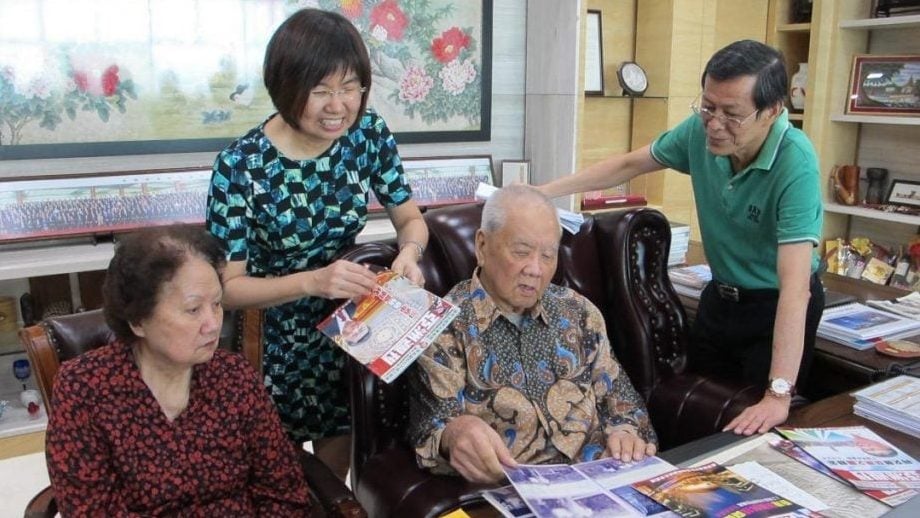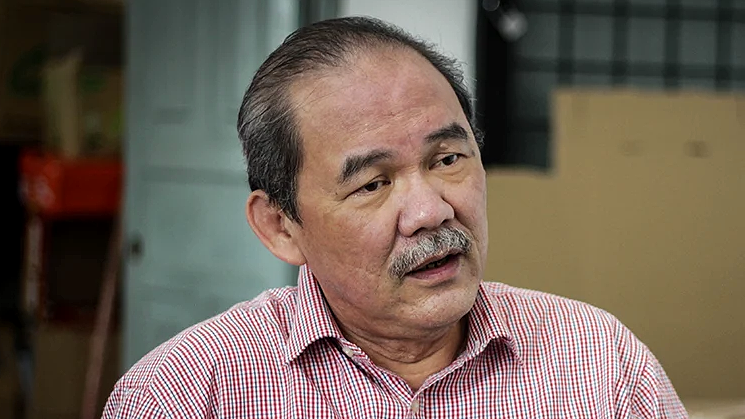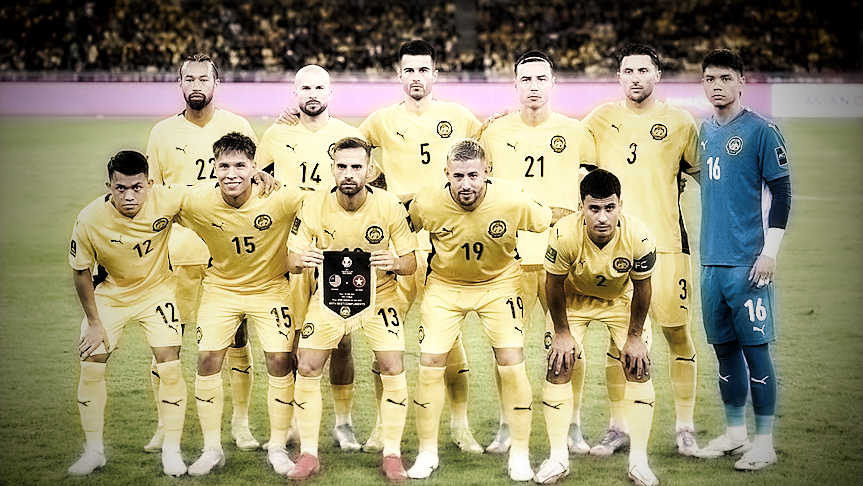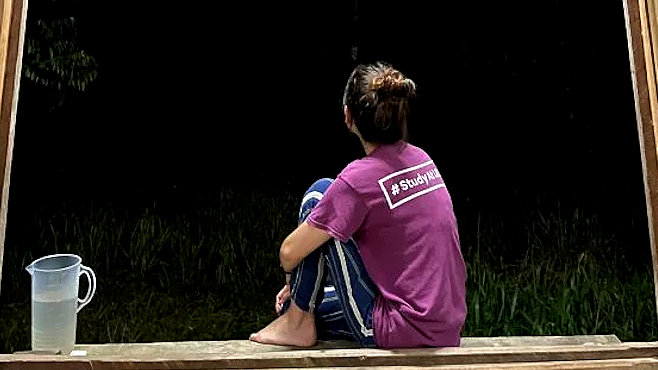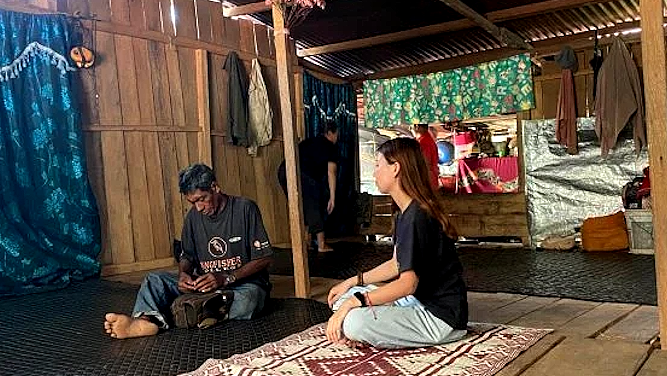News

PETALING JAYA:Paul Wong, founder of Mega Star Arena at Sungei Wang Plaza, was killed in a car accident in Thailand yesterday. He was 56. The entertainment and live events industry in Malaysia has lost one of its most influential figures. His family posted an obituary on his official Facebook account. The statement read: “With profound sadness, we announce that Paul Wong Chee Meng, founder of Mega Star Arena at Sungei Wang Plaza and a highly respected pioneer of the entertainment industry in Malaysia, passed away on November 22, 2025, in Thailand due to an accident.” Wong was a driving force in the entertainment sector — a visionary leader who organised countless concerts and major events, nurtured backstage crews and industry professionals, and left an indelible mark on Malaysia’s entertainment development. He leaves behind his beloved wife, Fanny Chia and their four children Billy, Jacky, Monique, and Eason. More than an event organiser, Wong was a pillar of support for many Malaysian artists and event companies. The entertainment firm he built played a key role behind numerous concerts, awards shows, and brand events, earning deep respect across the industry. “Without him, Malaysia’s entertainment scene would not be what it is today.” “He gave so many people a stage, opportunities, and direction.” “His passing is a tremendous loss to Malaysia’s entertainment industry.” Friends and longtime collaborators have been posting tributes on social media, recalling how his passion for music, his dedication to his craft, and his zest for life profoundly impacted countless people.
6 h ago

Calling themselves old backpackers, 10 seniors embarked on a 20-day tour by train, travelling more than 2,000 km from Seremban to Beijing. Retired teacher Toh Hon Leong, 78, led the group, who are all over 60-years of age, started the rail trip from Seremban train station to visit Thailand, Laos and entered China. Along the way, they paused in towns and cities including Hat Yai, Bangkok, Nong Khai, Vientiane, Luang Prabang, Boten, Kunming, Anshun, Guiyang, Zhengzhou, Luoyang, Pingyao, Datong and finally Beijing. They described the rail trip as a brave “northbound journey”, one that many people dream about when they are young but seldom have the chance to begin. At present, there is a freight rail service called the ASEAN Express that links Malaysia to China, passing through Thailand and Laos. This service is currently for cargo, not for regular passenger travel. For years, this overland railway adventure felt like wishful thinking—until the China–Laos Railway opened in 2021, linking three countries and turning fantasy into possibility. The seniors seized their chance to embark on a transnational train journey. Tour leader Toh described the 20-day cross-border rail journey as “a tribute to freedom and to life itself”. It was not only a test of physical stamina, he said, but also a way of proving to themselves that dreams do not come with an expiry date. “We set out with one simple belief,” he said. “We’re not afraid of being laughed at, and we don’t care how others look at us. We treated this journey as our own path to feeling young again.” “Whether we set off or came home, our hearts were pounding with excitement. It made us feel young all over again,” he said. The train became their loyal “steed”, fuelled by their curiosity and courage. Through windows, they watched rice fields, mountains, ancient towns and busy cities roll past like scenes from a slow-moving film. At every destination, they immersed themselves in local life—breathing in the scent of night markets, admiring temple silhouettes, wandering narrow alleys, and leaving footprints in historic landscapes. Yet even with all the beauty they encountered, the memory they cherish most is their nightly “moving hotel”: the simple comfort of a sleeper berth rocking gently through the dark. Crossing borders from Malaysia into Thailand and Laos proved more tedious, with lengthy immigration procedures. But entering China—visa-free—was surprisingly smooth. They were quickly impressed by China’s vast, efficient railway network, where routes were easy to navigate and high-speed trains zipped across provinces in the blink of an eye. The ride from Huaihua to Zhengzhou took just four hours across a thousand kilometres—“as if time had reversed”, they remarked. What touched them most deeply was witnessing the harmony of ancient and modern China. From the merchant heritage of Pingyao’s old town to the serene thousand Buddhas of the Yungang Grottoes; from the grandeur of the Great Wall to the pagodas, ancestral halls, food streets and stone alleyways of historic cities—each step made them feel how time slips quietly […]
2 d ago
Opinion

Turkiye’s willingness to contribute troops to a proposed International Stabilization Force in Gaza has drawn wide international attention. The devastation in Gaza is immense, and any credible effort to stabilise the territory appears urgent. Turkiye’s readiness looks decisive and humanitarian-driven. But readiness is not the same as legality. Until the United Nations provides the necessary mandate, Turkiye cannot move from preparation to deployment. And this distinction is crucial for ASEAN to understand. Reports from Ankara point to a high level of internal readiness. Turkiye is said to be assembling a brigade-sized formation of 2000 troops. This includes engineers, logistical experts, medical teams and explosive ordnance disposal units. Such specialised personnel signal a mission primarily designed for reconstruction rather than coercion. The proposed force is tied to a U.S.-brokered Gaza peace plan. Washington envisions a multinational presence to support humanitarian access, rebuild infrastructure and stabilise Gaza during a transition period. But the plan remains political, not legal. It does not yet have the authority of a United Nations Security Council mandate. Turkiye is aware of this constraint. Ankara has repeatedly stated that any deployment must be grounded in a clear UN resolution. Without that resolution, Turkiye would risk violating international law. It would also risk being perceived as acting unilaterally in one of the world’s most sensitive political theatres. Israel’s outright rejection of a Turkish role adds further difficulty. Tel Aviv does not trust Turkiye’s political stance on Gaza. That distrust complicates Washington’s efforts to assemble a broad multinational force. If one of the core actors on the ground rejects a key contributor outright, operational planning becomes extremely uncertain. Turkiye has also clarified its intentions. Ankara insists the mission must be humanitarian in nature. It does not want the ISF to become an armed mechanism to force disarmament on Hamas or any other Palestinian faction. Such a mandate would require Chapter Seven authorisation. That level of authority is unlikely to pass through a divided Security Council. There are credible reports that Turkiye has begun identifying troops and specialists across its armed forces. But internal mobilisation does not override the legal limitations. Without a UN mandate defining command structures, rules of engagement and mission scope, the forces cannot enter Gaza under international law. The latest Security Council resolution endorsed elements of the U.S. peace plan. But endorsement is not authorisation. It outlines political intentions, not operational permissions. Peacekeeping requires clarity, and that clarity is still absent. This is why ASEAN should pay attention. The Gaza conflict influences public sentiment throughout Southeast Asia, especially in Muslim-majority states. A mission without legal grounding could trigger diplomatic controversy. It could also undermine long-standing ASEAN principles of international law and non-interference. ASEAN must recognise that genuine humanitarian missions depend on legitimacy. Stability cannot be delivered by enthusiasm alone. Turkiye may be prepared, but Gaza is not legally ready. Until the United Nations completes the mandate — with clear authority, defined responsibilities and international consensus — no deployment can proceed. Turkiye’s readiness is real. But legality must […]
4 d ago
Features

Many people hold a romanticised imagination of fieldworkers. They assume that fieldworkers can effortlessly “blend in like natives,” enjoy extraordinary folk experiences, and cultivate a sharp observation. This kind of imagination largely comes from ethnographic writing—texts shaped by meticulously woven theories, vivid portrayals of “natives,” and Márquez-like storylines. They feel a little magical, almost like science fiction. Bronisław Malinowski, one of the founding figures of modern anthropology, established a classic research model that includes long-term fieldwork, participant observation, language learning and understanding the world “from the native’s point of view.” This model attracted generations of scholars striving to write an ethnography as remarkable as Argonauts of the Western Pacific. However, after Malinowski’s death, his wife published his private diary from the Trobriand Islands, and people suddenly realised that the seemingly romantic life of fieldwork was nothing more than an illusion crafted within the ivory tower. A Diary in the Strict Sense of the Term laid bare the hidden emotional landscape of this “model fieldworker”—depression, frustration, loneliness, and discomfort—forcing the anthropological community to confront, for the first time, the emotions and struggles that lie behind fieldwork. To be honest, I too once wrapped myself in that romanticism and plunged head-first into the world of fieldwork. Even after gaining years of experience and visiting one Indigenous community after another, I would still, from time to time, find myself trapped in that helpless situation, like the Chinese idiom says, “I’ve eaten bitter lotus root but can’t complain”—suffering silently with no outlet. If you were to open my field diary, you might expect pages filled with flashes of insight and cultural revelations—but no. What I recorded most often was my frustration over not being able to find a toilet in the forest. Blood and sweat in the field: The helplessness of female researchers I still remember my first arrival at a Batek village in Kelantan, when a sudden stomach ache hit me. To my surprise, all the brick houses were only half-completed products of modern civilisation: toilets had pits but no clean water source. In other words, villagers still had to go to the river to relieve themselves. Each family also had their own customary “invisible toilet” located along different parts of the river so that their waste would not meet. Perhaps out of urban modesty, I have only ever managed to relieve myself once in such open woodland. Most of the time, I would be on the verge of breaking down, trying my best to hold it until I returned to the foothill. Take the Jah Hut community as an example: I once followed villagers deep into the mountains to study their male initiation circumcision ceremony. When the urge to use the toilet struck, the boys were about to start their procession, visiting ancestral grave sites scattered across the area. The nearest household toilet was a 30-minute drive away. If I left to relieve myself, I would miss the heart of the ceremony. So, I followed a friend’s advice and performed a high-difficulty […]
7 h ago



